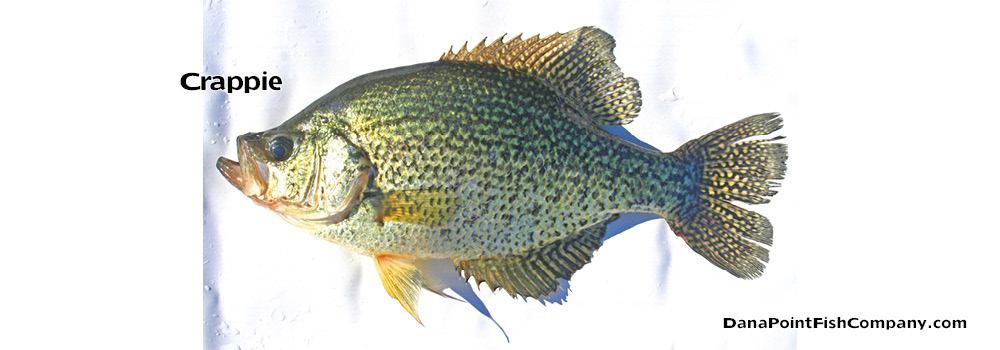There are two crappie species: Black Crappie (Pomoxis nigromaculatus) and the White Crappie (Pomoxis annularis). Crappie are also called papermouth, ‘sac-a-lait’ (bag of milk), and speckled perch. Both are in the sunfish family, and are panfish.
Identifying Characteristics
- Panfish.
- Black crappie have 7-8 dorsal spines while white crappie usually have 6. Their backs are light gray to light green, and the sides have light green silvery color with dark mottling. Black crappie reach from 12-18 inches in length in adult size.
- The white crappie have about 8-10 vertical gray bands on their sides. They sides and back are light gray to green, fading to silver on the bottom. The white crappie reach from 12-20 inches in adult size.
Range and Habitat
- Widely found in North American.
- Freshwater fish, found in lakes, ponds, backwaters, drainages, and streams. Black crappie prefer clearer waters than white crappie.
- They feed on forage fish, small invertebrates, and insects.
- Prior to spawning, both species form in schools.
Market Forms
- Popular freshwater gamefish.
Sources:
“Black Crappie.” Outdoor Alabama. Alabama Department of Conservation and Natural Resources, 22 Sept. 2016. Web. 10 May 2017.
Froese, Rainer, and Auda Kareen Ortanez. “Pomoxis Annularis Summary Page.” FishBase. Fishbase.org, n.d. Web. 10 May 2017.
Froese, Rainer, and Susan M. Luna. “Pomoxis Nigromaculatus Summary Page.” FishBase. Fishbase.org, n.d. Web. 10 May 2017.
“White Crappie.” Outdoor Alabama. Alabama Department of Conservation and Natural Resources, 22 Sept. 2016. Web. 10 May 2017.

